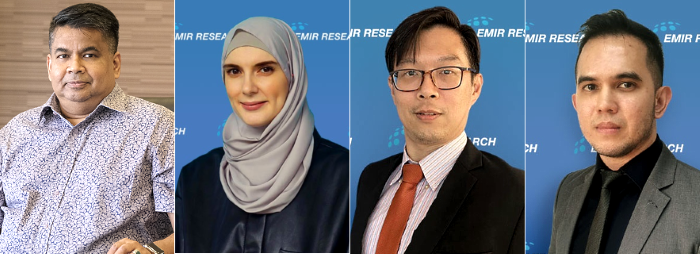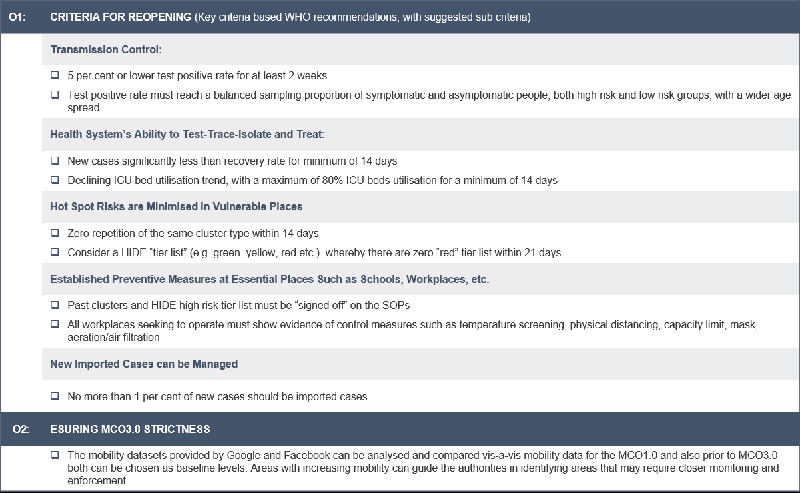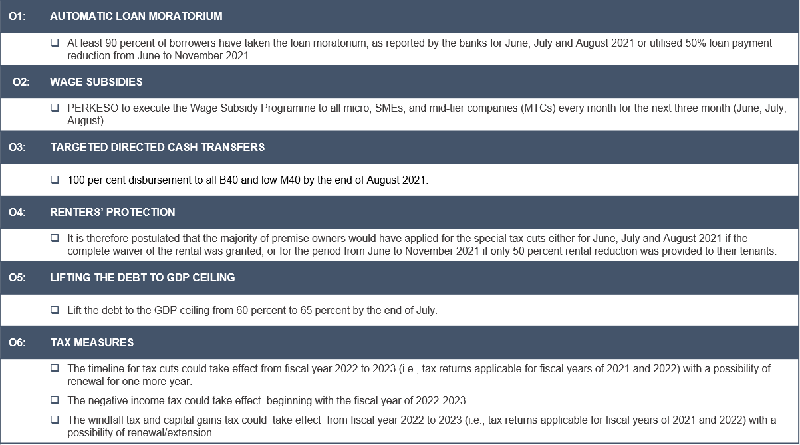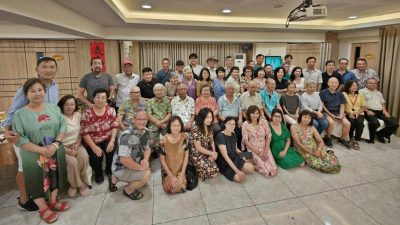By Dr Rais Hussin / Dr Margarita Peredaryenko / Jason Loh / Ameen Kamal

The government recently announced steps towards national recovery, whereby it aims to "exit" the COVID-19 pandemic in four phases.
In addition, EMIR Research believes that the transition into these phases must be accompanied by a comprehensive plan, developed with an understanding of the uniqueness of the crisis and the Malaysian context, with clear targets that can act as indicators of performance and feedback for course corrective measures – all based on science and economic theory.
The famous economic identity, also known as the equation of exchange, that links monetary supply and the real economy, suggests the increase of money supply as a solution to a "normal" financial crisis.
A "normal" financial crisis is always created through an oversupply of money flowing into unproductive sectors of the economy (when the real economy has reached the maximum of its capacity and cannot absorb any additional money), thus causing bubbles and subsequent destruction of money accompanied by the vicious cycle of economic activity contraction (increasing slack capacity and unemployment) and more money destruction.
The increase of money supply and other stimulus is required then to reverse the cycle. Then, money can start again flowing into the real economy, which now has a substantial excess capacity, and the real economic sector will begin growing.
But this is where the current pandemic-induced crisis fundamentally differs. We do have a massive slack of the capacity in the real economy right now due to devastation by COVID-19.
However, the main problem is reopening the economy is coupled with the great amount of uncertainty and hiccups that subsequently rest on our ability to manage the pandemic.
As such, any attempts to stimulate the economy may do very little unless the pandemic uncertainty is taken out of the equation.
Therefore, we suggest the following strategy based on 3+1 main strategic thrusts:
1. Protecting lives and livelihoods
2. Education emergency response
3. National reconciliation
4. National economic recovery plan
The first three strategic thrusts are immediate short-term responses to eliminate the uncertainty associated with the pandemic as fast as possible and minimize the negative impacts on the rakyat.
While the last strategic thrust focuses on what can be done to stimulate economic growth immediately once the pandemic uncertainty is over and the economy can reopen at full or near full capacity on the basis that the first three strategic thrusts are followed through successfully – which could be at the start of 2022.
This strategic thrust is composed mainly of action items that would become fruitful in the mid-term to long-term. However, their implementation must start immediately so that we are ready to stimulate the economy exactly when it is the right timing.
The article herein covers the first strategic thrust, while the subsequent thrusts shall be covered in sequential releases.
First strategic thrust: Protecting lives and livelihoods
The first strategic thrust concerns the immediate and drastic actions needed to protect lives and livelihoods through three goals, namely extension of "full" lockdown, extension of social and business safety nets, and pandemic management strategies.
Protecting lives and livelihoods must be the first and foremost thrust, as it forms the prerequisites prior to the transitioning into subsequent phases of the Movement Control Order (MCO) and the phases towards exiting the pandemic – aligned with the intention of the government.
The three main goals with corresponding objectives are as follows:
Goal 1: Extend a "full" lockdown – Continue with full national lockdown until it is safe to start gradually reopening various areas.
Objective 1: Extend the duration of MCO3.0 at least until July 13 2021—SIX (6) weeks in total for Phase 1.
Taking lessons learned from the relationship of lockdowns and downward progression of cases locally and in other countries, the total duration of MCO 3.0 should be at least until July 13, i.e., the total Phase 1 duration is 6 weeks in total.
Objective 2: Ensure MCO3.0 strictness that it is indeed only essential sectors of the economy are allowed to operate.
Definition of essential sectors and specific applications should go through a committee or a task force consisting of MITI, MOH, and MOSTI prior to approval. This is to ensure the list has been vetted by a balanced consideration of lives vs livelihoods.
The following figure summarizes the proposed targets of each respective objectives to track the progress of these proposed objectives.

Goal 2: Extend social and business safety net – Provide a safety net to those at risk due to shutting down economic activities and those facing prolonged unemployment.
Objective 1: Automatic loan moratorium for all micro, small and medium enterprises (MSMEs), B40 and M40 households while targeted for other individuals for at least three months or 50% loan payment reduction for six months.
Despite the targeted mechanism suggested, an automatic blanket moratorium for all would be preferred due to ease and speed of implementation.
Objective 2: Wage subsidies for three months for the private sector and daily wage earners.
Objective 3: Targeted direct cash transfers for three months to the deserving B40s and low M40s, especially for daily wage earners and gig economy workers.
Objective 4: Renters' protections for at least three months.
EMIR Research has re-iterated the above four objectives numerous times in our earlier publications. These propositions are all grounded in the heart-beat of the rakyat as discovered in the EMIR Research qualitative and quantitative studies in the aftermath of the MCO1.0.
EMIR Research is grateful the government has implemented much of it. However, minor improvements in terms of time-frame and expansion of the deserving categories can be made as underscored above.
In addition to the above four objectives, EMIR Research believes that the other two objectives are essential to make the overall goal of extending safety-net to the rakyat workable.
Objective 5: Lift the debt to GDP ratio ceiling to 65% as a temporary measure until the pandemic is over.
Lifting the limit to 65% of GDP for Malaysia Government Securities (MGS), Malaysian Government Investment Issues (MGIIs) and Malaysia Islamic Treasury Bills (MITB) borrowings as defined and provided for in the Temporary Measures for Government Financing [Coronavirus Disease 2019 (COVID-19)] Act 2020 (COVID-19 Act) as approved by the Parliament last year doesn't necessarily mean the government will use up the limit.
However, it'd allow some breathing space so that, if need be, government borrowings can cross the current 60% threshold – to perhaps 62% at most – just to see the rakyat through the impact of the deficit, which is already expected to be higher than 6.1%.
This measure would also reduce excessive politicking around this issue, which is not helpful to the rakyat situation.
Objective 6: Implement tax-cutting measures (on a temporary basis — with some exceptions).
Corporate income tax should be reduced from 24 percent to between 18 percent- 20 percent across the board. The tourism sector should be zero taxed for two years. Interestingly, the G7 countries, worried that countries would seek to reduce corporate tax in view of the ongoing pandemic, have agreed that the minimum level should be set at 15%.
The sales and service tax (SST) threshold for tourism operators should be increased from RM500,000 to RM1.5 million.
Income tax should be reduced by 50 percent across the board – which is out of the progressive schedule of 0 percent to 30 percent – except for those earning RM300,001 and above, for example.
For the purpose of those who do not qualify to pay income tax, the Inland Revenue Board (IRB/LHDN) could, under the broader oversight of the Malaysian Social Protection Council (MySPC, tentatively access the BPN & BPR database prior to the implementation of the single Social Protection Database (PDPS) in the future.
This for the purpose of negative income tax, i.e., payment by the government to the recipient who does not qualify for income tax. Payment would, therefore, come from the existing source of revenue, i.e., tax collection and not from borrowings. Otherwise, every working adult should be encouraged to register and open an income tax account.
The government should consider imposing a (one-off/yearly) windfall tax on the glove and commodities sector (to counterbalance the reduction in corporate tax).
At the same time, the government should consider introducing capital gains tax (CGT) – for dividends amounting to RM1 million and above, for example.

Goal 3: Pandemic management—Focus resources on fast-tracking the National COVID-19 Immunization Program (NIP) and expanding COVID-19 testing.
Objective 1: Ensure a stable and timely supply of the vaccines.
It is noted that the authorities have the least control in this aspect, and the issue could be a "bottleneck" for the NIP.
Nevertheless, efforts include (but not limited to) widening all sources of vaccine procurement, accepting all donations of vaccines approved by the National Pharmaceutical Regulatory Agency (NPRA), participating in international platforms calling for ways to promote equitable access to vaccines, faster Covax delivery fulfillment, and active monitoring and purchase of any surplus from any countries (open up diplomatic channels to support and report to JKJAV).
Malaysia's NPRA should consider expanding the list of conditional emergency approval of vaccines. NPRA's priority and diligence on safety evaluations are well-placed and should not be questioned.
It is also noted that it may not solve the issue in the near term due to overall global production limits.
However, unprecedented times require unprecedented measures, and the authorities should explore any and all options that may increase the chance of faster vaccine delivery.
Objective 2: Increase daily vaccination throughput.
In addition to increasing the number of vaccination centers (PPVs), the government should expedite the decentralization strategies such as the designation of general practitioner (GP) clinics and private hospitals as vaccination centers, rolling out drive-through vaccinations, and the use of Government vehicles to help bring vaccines to the elderlies and people living far away from vaccination centers.
Objective 3: Widen COVID-19 testing in terms of quantitative and qualitative reach.
One of the indicators of sufficient testing is a positive rate below 5 per cent. However, this is still subject to sampling bias. Therefore, in addition to increasing the number of testing, there is a need to widen the sampling quality.
Mapping Malaysia pandemic journey in terms of three dimensions – daily new cases, daily new tests and positivity rate indicates that, currently, Malaysia needs to perform at least 150,000 to 200,000 tests a day.
To ensure that the sample is wide enough to capture asymptomatic individuals and individuals with no obvious exposure, completely random sampling should be applied to the Malaysian population by zip-code areas – red spot zones or otherwise. Under the mass testing program, schools should be used for mass testing of students, followed by randomized testing thereafter upon reopening.
If a lower test positive rate isn't achievable despite a significant increase in testing and broader sampling as mentioned above for a minimum of 14 days, then it would suggest that the spread of infection in the community is already too widespread and would indicate the insufficiency of current measures.
Objective 4: Prioritization of economic sectors in "Phase 4" of the National Immunization Program.
Following the completion of the focus of vulnerable groups in earlier phases of the NIP, vaccination should gradually shift focus to as many economic actors as possible in the following months of June, July, to mid-August, i.e., 1.5 to 2 months focus for economic sectors.
The focus shall be the manufacturing sectors and other essential sectors that are vital economic contributors but an integral part of the historical and potential cluster contributors.
This coincides with the Private Partnership Industrial COVID-19 Immunization Program (PIKAS), which is considered as Phase 4 of the National Immunization Program, whereby Phase 4 should be extended to focus on as many economic sectors and businesses as possible, ensuring mid-tier companies (MTCs) and MSMEs to be prioritized (not just limited to manufacturing sectors).
Other non-essential workforce (to be re-defined as above) of the economy, particularly businesses and organizations that are not profit oriented may be considered for a selective and extended lockdown.
During June, July, and mid-August, non-essential sectors should be considered for continued lockdown until and unless they have been fully vaccinated.
Objective 5: Ensure sufficient manpower through the deployment of existing resources optimally.
For example, existing workforce from RELA, the armed forces, civil defense force and local community associations to be deployed to supplement the healthcare workforce in related efforts such as conducting mass testing programs, assisting at quarantine centers and vaccination campaigns.

The second part will be discussing the strategics thrusts related to education emergency response and national reconciliation.
(Dr Rais Hussin, Dr Margarita Peredaryenko, Jason Loh and Ameen Kamal are part of the research team of EMIR Research, an independent think tank focused on strategic policy recommendations based on rigorous research.)
ADVERTISEMENT
ADVERTISEMENT


































